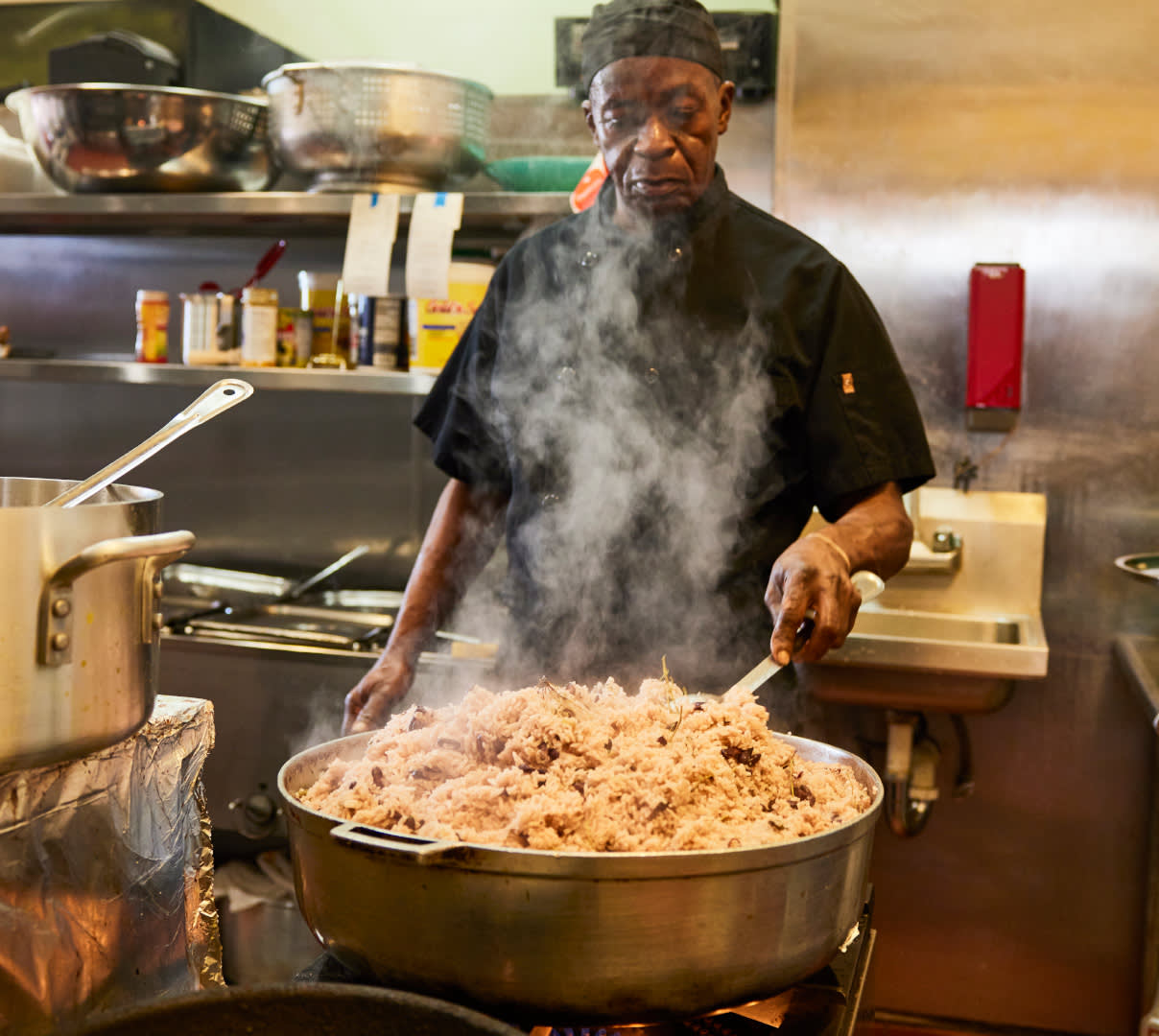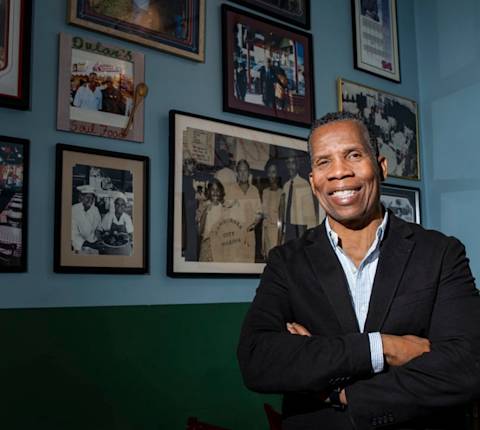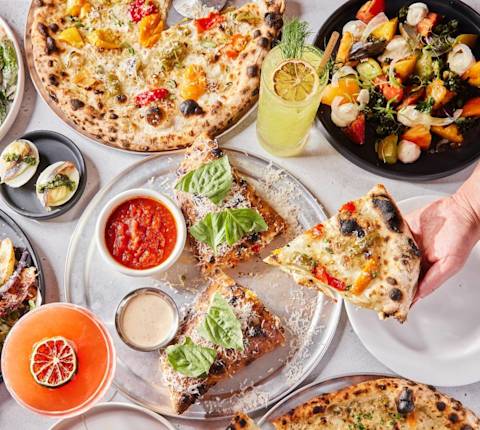You likely spend a lot of time perfecting your restaurant’s menu, but how much time do you spend on your restaurant menu pricing? Your food pricing strategy may be more important in getting diners through your doors than the tasty meals you offer.
Below, we share tips, strategies, and formulas that can help bring about higher restaurant profit margins for your restaurant. That way, you'll be prepared even if food and supply prices fluctuate.
What is menu pricing?
Menu pricing is a restaurateur's strategy to determine how much to charge for each dish. In simple terms, it involves calculating the costs required to make each dish and charging enough to generate a profit.
But here’s the tricky part—the profits also need to help cover other expenses, like labor, rent, and utilities. If you don’t price your menu properly, it can cost you not only profits but also the funds you need to keep your doors open.
With such high stakes, it’s important to follow proper menu pricing strategies. Luckily, there are several options which we discuss in detail below. First, let’s explore the larger picture.
How to price a menu
Menu pricing can be broken down into a few key steps:
Determine your direct costs. Direct costs include the raw price of ingredients for menu items, drip loss while storing, and food waste. You can find these numbers in your restaurant’s profit and loss statement, and use them as a baseline for determining your price points.
Determine your indirect costs. Indirect costs are your labor and operating expenses. Depending on the type of restaurant you operate, these costs can vary greatly. For instance, if you run a casual restaurant with counter service, you can charge less because you'll spend less money on service. In contrast, a fine dining restaurant will require more personalized customer service and you will need to charge more in return.
Calculate your gross profit margin percentage. Your gross profit margin percentage is a ratio of the cost of goods sold to net sales. It tells you how much of your revenue goes toward the ingredients and labor required to make each dish. Most restaurants aim to keep this in the 25-30% range, and no higher than 35%. You can use these percentages to gauge your existing menu pricing strategy. Follow the following formula in your calculation:
Gross profit margin percentage = (net sales - cost of goods sold) / net sales
These numbers can serve as a starting point for your menu pricing strategy, but be sure to review your profit and loss statement for more detail about your restaurant’s finances. In addition to your direct and indirect costs, it should contain your net profit or loss, and sales and revenue breakdown.
Menu pricing strategies
It’s time to start crunching numbers for your restaurant’s menu pricing strategy. Here are three strategies to get you started.
Pricing by food cost
The most common approach to menu pricing is to base it on food cost, or the cost of the ingredients used to make each dish. Coming up with a pricing formula and applying it to each dish can simplify the process.
While there is certainly a range, an industry rule of thumb is a food cost percentage of about 30% of the menu price. This means that you’ll end up charging roughly a little more than 3X what a dish costs to make.
There is no one-size-fits-all formula, however, and it can vary depending on the type of restaurant you run.

We figure out what the costs are, and then we usually just times it by four. Then we see how that price point works for like a month.
Here’s a formula for calculating food cost percentage for your restaurant:
Food cost percentage = food costs / food sales
To use this formula to price a particular dish, figure out the cost of ingredients to make one serving. Then decide on your ideal food cost percentage, and solve for food sales.
Keep in mind that certain food items may have a limited lifespan or shelf life, meaning food waste could be an added expense in your food costs. You can get an overall picture of food waste and drippage by figuring out how much you spent on inventory at the beginning of the month and subtracting the value of the usable inventory you have left. Dividing this by total sales will give you an overall food cost percentage for your restaurant.
The prices for raw and paper goods are always in flux. Pricing for certain ingredients may vary depending on the season, and availability can change due to unpredictable economic, political, and agricultural conditions. Shifting costs make it crucial to regularly recalculate your food cost percentage.
But menu prices don’t need to be set in stone. Many restaurateurs experiment to see what works.

"Every six months we'll double-check our profits and then start going through to see what's selling, what's not selling. Whatever's really popular, we'll go through and make sure that that profit makes sense."
Pricing by competition
Our second menu pricing formula involves pricing your menu to fit your local market. To use this method, start by studying the menus of local competitors. You can either set your prices to match theirs, or charge slightly less to give the perception of higher value.
Another method is to set prices slightly above your competitors and then add higher-value items or services, such as food and wine tasting, cooking demos, or meal kits.
You can also use this strategy to check your work after setting prices by food cost. Investigate what your local competitors are charging for their dishes. If your prices are much higher or lower than other nearby restaurants that have the same customer base and offerings, it may signal an opportunity to charge more — or a red flag that you’re losing potential customers.
Pricing by demand analysis
Pricing by demand analysis is similar to pricing by competition, but looks at supply and demand for particular menu items or cuisines in your market. To start, study restaurant options near you. If there is a large number of similar restaurants, competition is stiff and it may be best to price items slightly lower.
However, if there aren’t many similar restaurants, customers have fewer options and you may be able to price your menu items marginally higher.
The demand analysis model works particularly well in airports and stadiums, where restaurants have captive customers. Because diners have few options, prices are often far higher than they would be at similar restaurants outside airport or stadium security gates.
Factors that affect menu pricing and profitability
Customer preference: What dishes do customers in your target demographic seek out? If a certain dish is trending (think back to the avocado toast or rainbow bagel crazes), you may get away with charging more. Perennial crowd favorites are also worth more to customers, and can bring potential for an upcharge.
Cohesion: Just as you look at the individual components of each dish to set pricing, it’s important to look at them in the context of the rest of your menu. A high-priced luxury entree may seem out of place on the same menu as a hearty, affordable dish, and could confuse customers.
Regional variability: A small-town restaurant can’t charge New York City prices for the same fare, and vice versa. Your location will impact the amount you can charge for your items.
Portion control: A hallmark of a good restaurant, consistency can also save you money. By ensuring portions are consistent every time – through careful weighing and measuring – you can reduce unnecessary expenditure.
Menu pricing for DoorDash
According to the 2022 State of the Industry Report from the National Restaurant Association, 54% of adults say purchasing takeout or delivery food is essential to the way they live.
When developing a menu pricing strategy for technology platforms like DoorDash, our partners often find their customers appreciate when in-store prices are similar to off-premise prices. We've seen that merchants who do raise prices on DoorDash can experience up to 37% fewer sales and up to 78% lower reorder rates, based on a 2023 internal study of over 4500 small business restaurants on DoorDash during a four-week period.

To provide a high-quality experience for all of our customers, we set prices on DoorDash the same as our in-store prices. DoorDash even enables operators to set different pricing for delivery and pickup, but a core part of us providing high-quality customer service is accomplished through our consistent menu pricing.
Taking a broader perspective, DoorDash provides marketing tools that help restaurants reach new customers, increase brand awareness, and bring in incremental revenue. Because overall revenue should be going up as a result of new business growth, restaurants may not need to increase prices on DoorDash – choosing instead to offer consistent menu pricing for a positive customer experience.
Instead of setting different prices for in-store and off-premise, an overall menu engineering approach can help you promote your most profitable dishes and improve margins on those that aren’t quite as lucrative. This entails an analysis of your restaurant’s sales and various strategies, like menu design, to steer customers towards the higher-margin dishes.
You can determine a subset of dishes to bring over to your DoorDash menu – not only those that are profitable, but those that travel well, too. Appetizing menu descriptions help sell, and professional photos can help diners conceptualize dishes they might not be familiar with.
Creating a winning restaurant menu pricing strategy
It takes skill, knowledge, and foresight to develop the right menu pricing strategy for your restaurant. Often, this is a trial-and-error process, requiring you to experiment with customers' responses to different price points.
Every restaurant has its own varying costs, customer bases, and geographies. Don’t be afraid to try different approaches until you find one that works for you. Customers are used to seeing prices go up, as long as the fluctuations aren’t dramatic. When you hit the sweet spot between margins and customer sentiment, you’ll be ready to celebrate success and repeat customers.
If you’re looking to further expand your customer base and boost your sales, consider partnering with DoorDash. Restaurants have flexibility and choice when it comes to DoorDash: when their store is available for orders, the menu they put up, and their commission rate.
Plus, DoorDash is delivering more than delivery, with direct online ordering, pickup to offer takeout through DoorDash at lower commission rates, promotions to attract new customers, and more.
Learn more about our suite of products and how you can get started.
Disclaimer: Please note that the above content is for informational purposes only and that DoorDash cannot provide financial or professional advice to merchants. We recommend that merchants consult with their own financial and/or other professional advisors on any questions.





